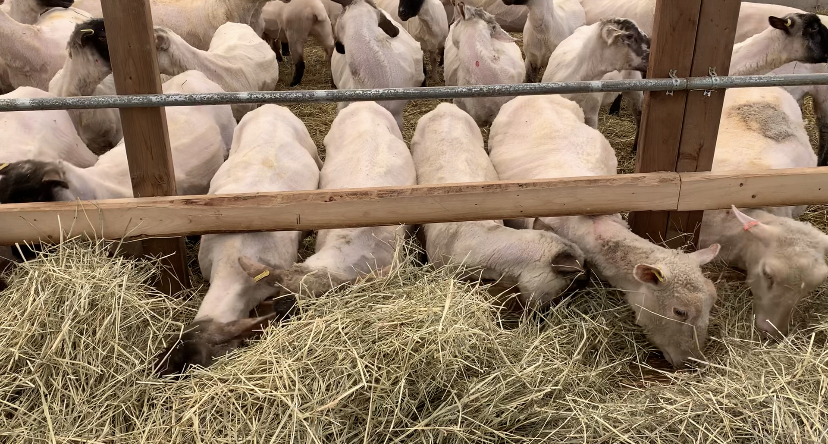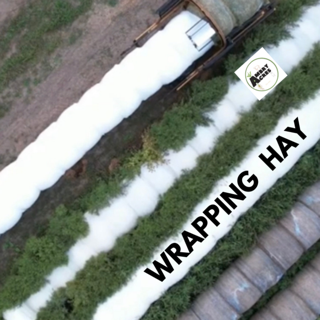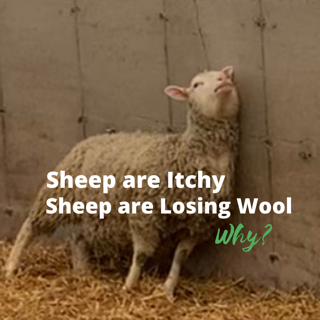Shearing sheep for good health relates to shearing before lambing. This allows for better lamb survival and flock productivity while improving fleece quality. During cold weather, shearing must be managed to allow sufficient stubble and/or recovery time post-shearing to protect from cold exposure. Following these simple guidelines improves the welfare of our flock.
Shearing before lambing is a practice that benefits the welfare of the sheep as well as making management easier and increasing flock productivity. There are important considerations to keep in mind to perform this practice effectively. These relate primarily to timing relative to birth, feeding, and protection post-shearing. If these conditions are considered carefully, the benefits are significant to both sheep and shepherd.
Shearing Sheep for Good Health Comes with Multiple Benefits
Wool holds considerable moisture, with a full fleece capable of absorbing a lot of water under humid climates, even when sheep are housed indoors. This moisture holding capacity of wool creates a microclimate close to the lamb that is relatively damp, thus creating a prime environment for hosting pathogens and allowing them to proliferate. Both the relative humidity of the barn and the microclimate near the lamb are drier when ewes are shorn, creating a healthier environment that is less conducive to pathogen growth.
Wool also has the capacity to hold mud and manure as well as absorb fluids from the birth process, all of which can harbor and promote the growth of pathogens. A short fleece minimizes this situation, creating a much cleaner environment for the benefit of both the ewe and her lamb(s).
It has been well established that shearing during mid-pregnancy improves lamb birth weight.
Pre-lambing shearing improves wool quality in two distinct ways. The metabolic stress that occurs in late pregnancy and especially in early lactation creates a weakness in the wool fiber often referred to as “wool break”. The other improvement in wool quality brought on by pre-lamb shearing is a reduction in vegetative matter in the fleece.
Ewes Gain More Room to Access Feed

Shorn ewes take up far less room at the feed bunk (15-20% less space), allowing better feed access for more of the flock.
Lambs that can quickly seek and find the teat have a much greater chance of survival. A full fleece reduces access to the udder, making it hard for the wet newborn to find it. In addition, it not uncommon to see lambs literally sucking on tags of wool instead of the teat in full fleeced ewes. Shearing removes this obstacle, creating easier access.
Shearing ewes prior to lambing is much easier than during lactation. As the ewe reaches peak lactation, around a month after lambing, the lanolin in the fleece becomes much more “sticky”
When shorn, it is much easier to observe the ewes for body condition and also to tell when they are about to lamb. Shorn ewes are also more active than those in full fleece, and this exercise may improve maternal health in late pregnancy. Shorn ewes are also less likely to become cast or stuck on their backs during late pregnancy.
Beneficial maternal behavior including grooming of lambs are enhanced in shorn ewes at birth. This improves maternal bonding and decreases the risk of mis-mothering and starvation/exposure in early life.
Source: https://u.osu.edu/sheep/2020/10/20/the-benefits-of-shearing-before-lambing/
Visit our Farm Virtually by Watching Our Sheep Shearing Day. From Start to Finish Video.
When Do We Shear?
Ideally, all ewes should be shorn 30-60 days prior to lambing to reduce stress on both the unborn lambs and their moms. The ideal shearing window is closer to 42-75 days prior to birth.
Does Shearing Hurt the Sheep?
Farmers worry about the stress caused by certain management practices. Will production be affected? Could these practices make my sheep more susceptible to disease? In the last few years researchers in Lethbridge, Alberta believe they have found a way to evaluate the intensity of stress caused by management practices. Animals under stress put out certain hormones that can be measured in the blood. Researchers, Mears and Brown, measure the blood levels of hormones, cortisol and beta-endorphin. These investigators use hormone release changes to relate to the level of stress. Researchers concluded shearing did not stress ewes beyond the stress caused by the handling procedures. Source: http://www.omafra.gov.on.ca/
Preparing the Sheep Flock for Shearing
Shearing is a job that is done each year. Here are a few tips that we followed:
Discuss what materials the shearer will supply (for example, boards, chutes, wool packers, etc.) and what you are expected to provide.
Sheep must be dry to be sheared!
Feeding Before and After Shearing Sheep
Sheep should be held off feed and water at least eight hours before shearing because some hay, will build up gas and back up onto the lung area during shearing and cause what is called a gasper. If the animal is not put on its’ feet right away it will die of suffocation.
Feed removal for 24 hours is a common practice to improve the handling of non-pregnant sheep during shearing. For ewes sheared close to term (21-42 days pre-term), feed withdrawal should be lessened either by feeding a half ration the day before shearing or by withdrawing feed for only 12 hours. More severe feed withdrawal during pre-lambing shearing will increase the incidence of both milk fever and ketosis, which are triggered by stress and feed withholding. Pre-lambing shearing will also increase the ewe’s caloric needs due to the increase in heat production, so ewes must be offered up to 25% more feed when wool is short (generally less than 3/4 inch) depending on climatic conditions.
Shearing Sheep for Good Health Requires Focusing on our Facility.
Shearing can be a stressful time for both the producer and the sheep. This stress can be intensified if the handling facility is constructed without considering labour efficiency, ergonomics and sheep well-being. Animal welfare is a principal concern during shearing and is a top priority. The handling facility should allow for easy handling of the sheep. Keep shorn and unshorn sheep separate, and provide a safe working area to prevent injuries.
Have adequate adult helpers to keep the job moving. It is crucial to have enough people to manage the job effectively and safely.
If the floor is concrete, use plywood or rubber livestock mats on a flat level surface for shearing on. To create a safe work environment, have good ventilation and lighting.
With some modern long legged breeds, the shearer should have an area 8 x 8 feet to work in.
Have a good corn broom, not a heavy stable broom, to keep the shearing area swept when necessary.
Keep a small pen filled for catching sheep for the shearer. Sheep chased around a large pen before coming to the shearing floor will continue to fight while being sheared.
No shearer deliberately cuts a sheep.
Do not trim feet before giving the sheep to the shearer.
Have sufficient help to take the sheep from the shearer and do your foot trimming, vaccinations and worming after shearing. Source: http://www.omafra.gov.on.ca/
Shearing Sheep for Good Health Includes Haresting Good Quality Wool.
Tips Regarding Handling the Wool
White faced, white wooled sheep should be sheared first; dark faced or coloured wool sheep last.
White wool and coloured wool should not be packed in the same bag.
Any manure or urine stained wool should be removed. Leg and face clippings should also be removed. The shearer removes the belly wool when shearing. Sometimes some discoloured wool is left along the bottom edge of the side wool. This is also removed. In the case of breeds such as Suffolk and Hampshire or any other dark faced and dark legged animal, there may be dark fibers around the edges of the fleece that should also be taken out.
Wool can be harvested and sold locally.

Pack only in burlap bags; never in plastic.





